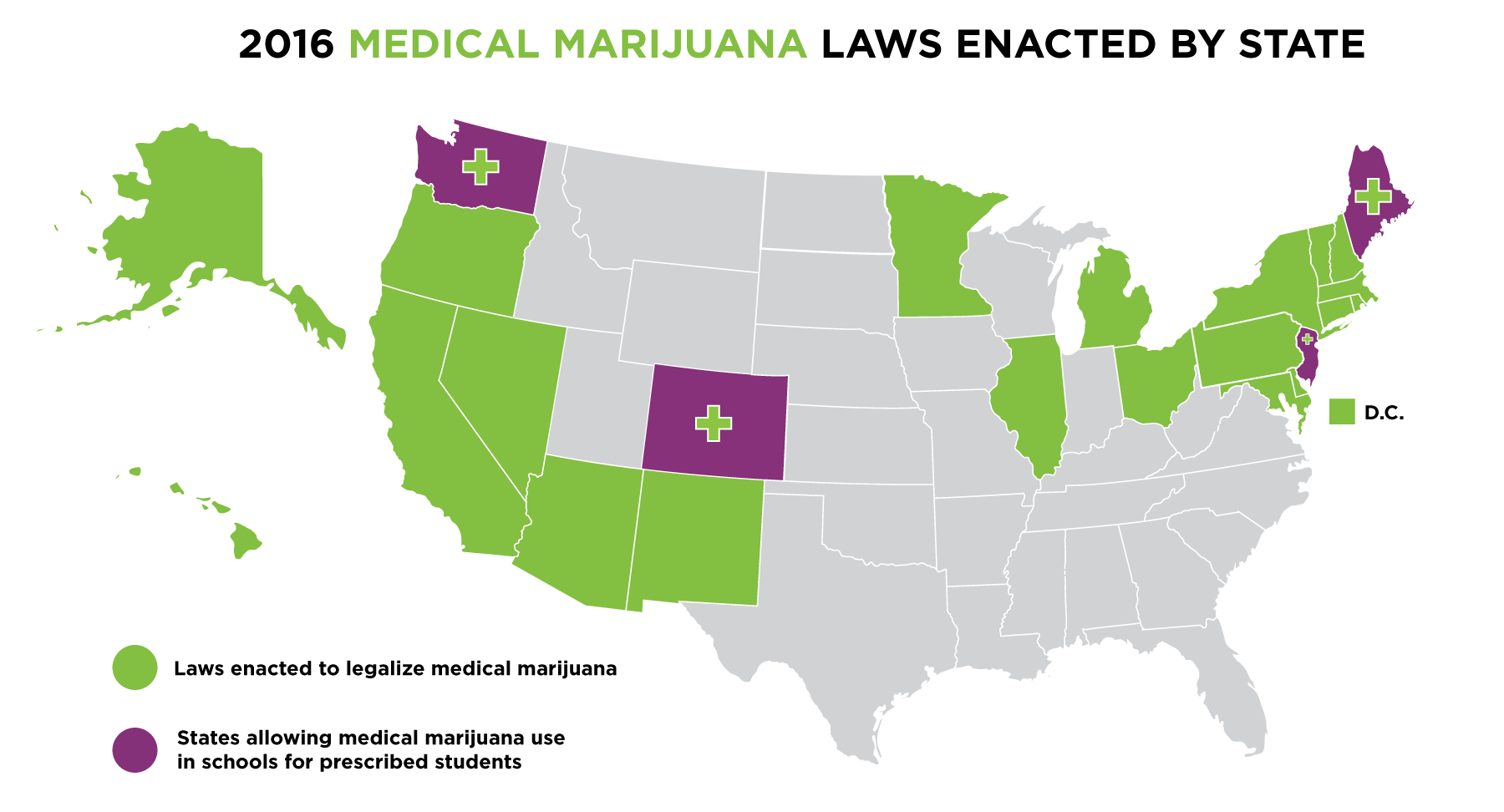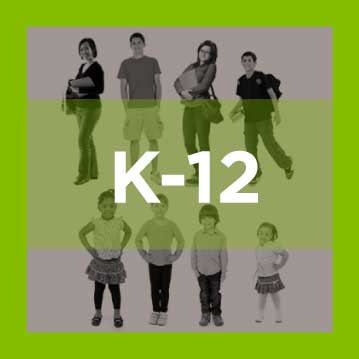If you're looking for more up-to-date information, please see our most recent post on this topic, "When Medical Marijuana Meets School Drug Policy, What Can States Do?" published January 2019. The post includes an updated map.
According to the National Conference of State Legislatures, 24 states allow the use of medical marijuana. Voters in California approved the first medical marijuana law in the country in 1996. The most recent additions to the list are Pennsylvania and Ohio, where the governors signed bills this year. Additionally, a number of states have marijuana measures on the ballot this November.
When marijuana use rights are extended in individual states, school administrators may be put in the difficult position of navigating complex and conflicting areas of state and federal law to avoid any potential consequences. This is especially true given the ambiguity surrounding possible loss of Title I funding and the relationship between student data privacy, medical records and whether those protections apply to medical marijuana. As states continue to expand marijuana laws to patients and recreational users alike, the Department of Justice has made it clear it will take a backseat to state leadership and watch the experiment unfold.
As social norms around marijuana use continue to evolve, it is worth discussing the policies states have adopted to accommodate young patients and the possible pitfalls they are seeking to avoid when doing so.
Medical Marijuana and School Policy
In April, Colorado became the third state – joining New Jersey and Maine – to allow students to use marijuana in school for medical purposes.
While it is too soon to identify specific trends in policies, both New Jersey and Colorado require that:
- Students using medicinal marijuana products have a valid medical recommendation.
- Only non-smokable marijuana products may be administered on school grounds.
- Only parents, legal guardians or primary caregivers administer the substance.
- Students cannot be punished for marijuana use on school grounds.
Maine stands out from these two because policymakers worked from the state’s existing medical marijuana framework and simply expanded the locations in which medical marijuana use is permissible.
A fourth state, Washington, has taken a slightly different path. Beginning July 1, 2016, state law specifies that schools are not required to permit on-site use of medical marijuana, but are permitted to allow it if they choose.
Policymakers walk a thin green line
Medical marijuana use in schools raises several key issues for policymakers. Most importantly, despite the differences in legal status of marijuana at the state level, it is still listed as a Schedule I drug under federal law, which means the federal government does not recognize the medical benefits of marijuana products.
Because use of medical marijuana in schools may cause them to run afoul of federal drug-free workplace requirements, it may result in the termination of federal Title 1 funding, as well as
U.S. Department of Agriculture funding that supports school nutrition programs for low-income students, according to this Colorado Legislative Council analysis. However, as the fiscal note discusses, federal agencies enjoy wide discretion in enforcing drug-free workplace requirements, so a loss of federal dollars is not guaranteed and would likely occur after a range of other options are utilized to compel compliance.
What’s in store for the future?
While it’s too soon to make predictions or identify patterns in state policy, this is a challenging issue for policymakers at all levels. The expansion of marijuana use policies in the states has largely gone unchecked by federal officials; however, the expansion into schools presents a different set of issues and could meet some federal pushback.







